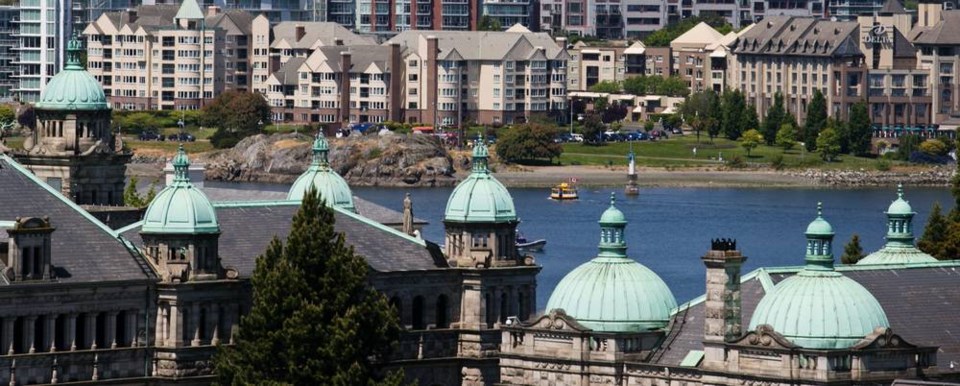It will be “interesting” to see how the credit-rating agencies eventually decide on how to handle the new world order of huge pandemic debt loads, Finance Minister Carole James remarked during the release of B.C.’s public accounts on Monday.
“Rating agencies” and “interesting” don’t normally appear together. The work of assessing government fiscal performance and judging the risk of lending money to them doesn’t usually find a wide audience.
It only makes headlines when they reduce the letter grade, which incurs higher borrowing costs. But it will get more attention with the sudden huge deficits that will be on the books for decades.
James didn’t go into detail, but one of the interesting decisions involves whether the agencies hold to their current standards, or change them to reflect the pandemic reality.
The public accounts update on B.C.’s debt picture shows how much is riding on the slightest downward tick in credit ratings.
The NDP was proud to boast in the February budget about the three-year plan to spend $33 billion on capital projects, mostly schools and transportation projects. “Highest level ever,” it was proclaimed.
So was the corresponding jump in debt, $17 billion.
Previous B.C. Liberal governments were no slouches in that department. Total provincial debt stood at $38 billion when the economic meltdown hit in 2008. There was a big push on capital projects to ease the impact, and that drove debt up to $65 billion over the years following the banking collapse.
It was $66 billion when the NDP took over three years ago. Monday’s update posted it at $72 billion as of March 31. It grew by $6 billion in one year.
The NDP plan as of the February budget was to carry on borrowing and building, with debt scheduled to pass the $80-billion mark by 2022.
The pandemic has intensified that commitment, as the employment is needed more urgently now that the service economy is reeling.
The new wrinkle is that billions more will also have to be borrowed for operating budgets, on top of the capital spending programs. The current operating budget has been shredded due to COVID-19. There are billions in new emergency spending and billions more in lost revenues. B.C. is about $13 billion short of where it was in February.
The original debt plan was considered sustainable. All the metrics used to relate it to the economy portrayed it as affordable, like a mortgage on a house. B.C. has the second-most-affordable debt load in the country, behind Saskatchewan, and is far ahead of Ontario and Quebec.
The interest bite — the percentage of provincial revenue used to pay interest on borrowing — is the lowest in the country at three per cent.
But now about 20 per cent of the operating budget has to be funded by new borrowing. That will hold true for the next several years.
Low interest rates help ease the pressure. But the levels are so high that even a slight blip upward based on a rating agency’s pronouncement will cost big bucks.
It could get interesting.
JUST SO YOU KNOW: Findings from a random traipse through the load of data on the government’s fiscal year performance released this week:
• The latest head count shows a sustained increase in the number of provincial public-sector employees. The full-time-equivalent count within government stood at 37,759 as of March, up 1,610 from the previous year. It brings the increase in government employees since the NDP took power in 2017 to 4,969. The hiring spree was also reflected in provincially funded offices outside of the direct government. Three dozen provincial agencies hired 727 new employees in the last year (some may have been shuffled to new offices from inside of government).
• The Legislative Assembly’s spending details include a bill in excess of $700,000 to assorted to outside lawyers for various cases.
The legislature paid Arvay Finay LLP $435,000, and the Speaker’s office said Tuesday it was for former children’s representative Mary-Ellen Turple Lafond’s legal bills during her dispute about the terms of her departure from the job. Another $127,000 was paid to Considine and Co. for work on getting the injunction against protesters who barricaded the building in February.
